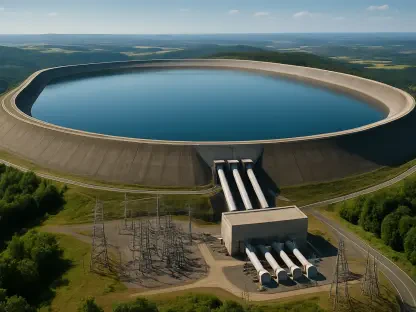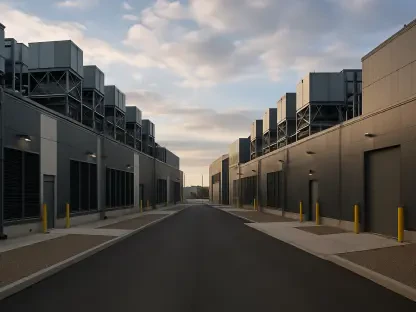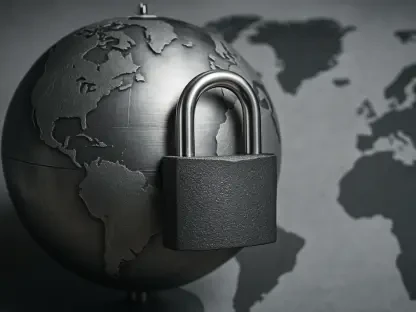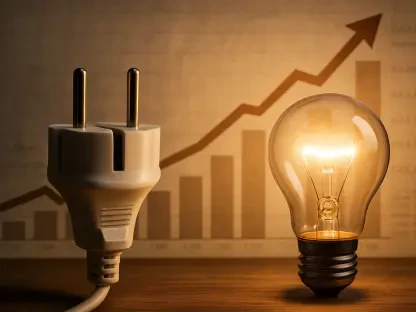In the rapidly evolving landscape of energy policy, the recent budget bill signed by President Trump has sparked significant debate. Christopher Hailstone, an expert in energy management and renewable energy, joins us to discuss the implications of these changes, offering insights into grid reliability and the future of clean energy in the U.S.
Can you explain the main components of the budget bill that President Trump signed and its impact on clean energy tax credits?
The budget bill signed by President Trump makes substantial cuts to the clean energy tax credits that were part of the Inflation Reduction Act. Specifically, it shortens timelines and reduces the scope of the 45Y production and 48E investment tax credits, effectively scaling back incentives that have supported the growth of the wind and solar industries. This reduction could reshape the landscape of clean energy development in the United States by disincentivizing investment in these areas.
What are the potential consequences of cutting clean energy tax credits for the wind and solar industries?
Cutting these tax credits poses several risks to the wind and solar industries. Primarily, it could slow down the pace of investment and development in these sectors, as the financial incentives that once made these projects attractive will no longer be as generous. This could lead to a significant decrease in new projects, potentially undermining the progress the U.S. has made towards a more sustainable energy grid and delaying the transition away from fossil fuels.
How does China’s current energy strategy compare to the U.S., particularly in terms of wind and coal usage?
China is in a unique position where it remains the world’s biggest consumer of coal but is simultaneously leading in the deployment of wind capacity. This dual approach starkly contrasts with the U.S., where recent policy changes under Trump’s administration have favored a return to traditional energy sources like coal while scaling back on renewables. Despite this push, the U.S. adds a fraction of the wind capacity that China plans each year, indicating a significant divergence in long-term energy strategy.
What were the main reasons behind President Trump’s decision to reduce these tax credits?
President Trump’s decision to reduce these tax credits seems to be rooted in a broader political and ideological shift towards re-emphasizing coal in the U.S. energy portfolio. This aligns with his statements about bringing coal back and skepticism towards the efficacy of wind power. He aims to revitalize traditional energy sectors, which have experienced decline over previous administrations focused more on reducing carbon emissions and encouraging renewables.
Can you elaborate on the Republican lawmakers’ stance on the clean energy tax credits based on the letter with 13 House Republicans?
The letter from 13 House Republicans highlighted a conflict within the party, as these lawmakers expressed concern about the cuts to clean energy credits. While they were adamant about not supporting a complete repeal of these credits, they still voted for the bill, perhaps under political pressure or a desire to move other legislative priorities forward. This indicates a nuanced Republican stance, with certain factions seeking to maintain some level of support for clean energy.
How did the House Freedom Caucus influence the final version of the bill?
The House Freedom Caucus played a critical role in shaping the final version of the bill. They pushed for more stringent conditions on the tax credits, advocating for a requirement that projects begin construction within a specified timeframe to qualify. Their insistence on these stricter measures reflects their broader agenda to eliminate subsidies they consider unnecessary, thereby exerting pressure on more moderate Republicans to accept these terms to pass the bill.
Can you discuss the specific clean energy credits targeted by the bill, such as the 45Y production tax credit and 48E investment tax credit?
The 45Y production tax credit and 48E investment tax credit are cornerstones of the clean energy incentives under the Inflation Reduction Act. These credits were designed to make renewable energy projects more financially viable by offsetting production costs and investment requirements. The new bill limits eligibility for these credits, reducing the financial attractiveness of new projects and, consequently, dampening the growth trajectory of the renewable sector within the U.S.
What are the implications of ending the 25D residential solar credit and the electric vehicle credits on the clean energy sector?
Terminating the 25D residential solar credit and the electric vehicle credits will likely decrease consumer adoption of solar panels and electric vehicles. These credits have been instrumental in lowering the upfront costs for individuals and families interested in transitioning to cleaner energy solutions. Their removal could slow the adoption rate, as the financial burden on consumers increases, potentially deterring them from switching to solar energy or electric vehicles.
What is the expected economic impact of this bill on U.S. electricity and clean fuel production according to the REPEAT Project report?
The REPEAT Project report predicts a significant negative economic impact from this legislation. Anticipated outcomes include a $500 billion reduction in capital investment for electricity and clean fuels over a decade. Additionally, the report forecasts increased annual energy costs for U.S. households and businesses, highlighting the broad-reaching fiscal repercussions that could stem from these policy changes.
Could you describe the anticipated challenges for new solar and wind projects due to the bill?
New solar and wind projects face mounting challenges as a result of the bill. Without the full support of tax credits, these projects may struggle to secure the necessary funding and interest from investors. This could stifle innovation and capacity expansion in the renewable sector, leading to reduced growth in these technologies that are essential for transitioning to a sustainable energy future.
How might restrictions on supply chain inputs from foreign entities of concern affect the clean energy sector?
Restrictions on supply chain inputs from foreign entities, especially those targeting countries like China, can significantly hinder the clean energy sector. These limitations could disrupt the supply of essential components used in solar and wind projects, increasing costs and delays in project development. This challenge complicates the landscape further, as clean energy companies are forced to navigate these barriers while seeking alternative sources or methods to maintain project viability.
What concerns do clean energy advocates have about the bill’s provisions?
Clean energy advocates are deeply worried that the bill’s provisions will roll back years of progress in renewable energy adoption. Their concerns are centered around the abrupt withdrawal of financial incentives that have driven the growth of clean energy projects. Additionally, the bill introduces uncertainty and instability, which could deter future investments and slow momentum towards a cleaner energy economy.
How does the bill create uncertainty in the clean energy economy, especially regarding the FEOC rule?
The introduction of the FEOC rule and other restrictions within the bill create significant uncertainty in the clean energy economy. This uncertainty stems from unclear future conditions for financing and policy support, which complicates planning and decision-making for companies within the sector. This environment could lead to hesitation among investors and developers, hindering the progress of new projects while exacerbating the risks associated with clean energy investments.
Why do experts believe that investment in clean energy will suffer as a result of this legislation?
Experts anticipate that investment in clean energy will suffer due to the legislative cuts to tax incentives and the introduction of stringent regulations. The bill’s provisions are perceived as a barrier to entry for new projects and may deter investors seeking stable returns. The uncertainty and increased financial burden create an unattractive investment climate, potentially slowing the pace of advancements in renewable energy technologies.
Could you explain the concept of “a massive cost of capital shock” mentioned by Chirag Lala and its effect on the clean energy economy?
The “massive cost of capital shock” refers to the sudden rise in capital costs for clean energy projects introduced by the new policy measures. This shock makes financing clean energy projects more expensive and risky, as financial incentives are slashed and regulatory uncertainties grow. The increased cost and risk make it difficult for projects to attract necessary investments, threatening the expansion and evolution of the clean energy economy.
What is your forecast for the future of U.S. energy policy in light of these changes?
Looking forward, U.S. energy policy will likely undergo a period of adjustment and debate as stakeholders grapple with these changes. I foresee significant challenges in balancing economic growth with environmental sustainability. While this bill marks a pivot towards traditional energy sources, it might ignite renewed advocacy and innovation in clean energy solutions. The path ahead calls for strategic, bipartisan efforts to reconcile economic and environmental priorities for a resilient energy future.









